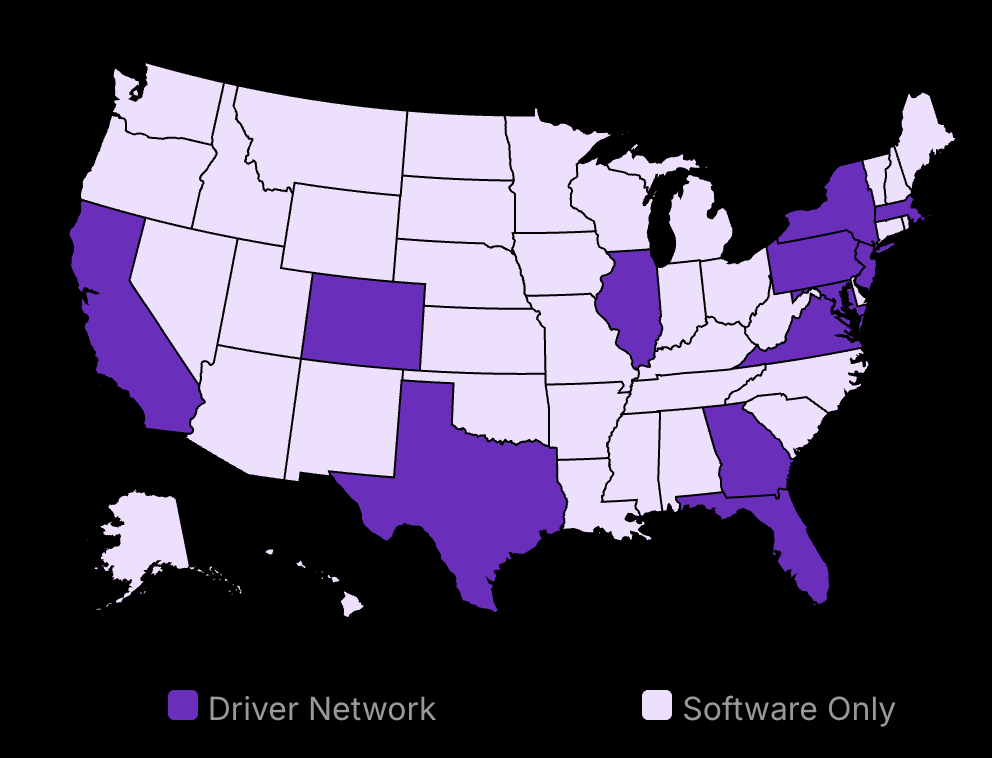HR can seem overwhelming for small businesses.
The right approach can streamline operations and drive growth.
In this complete guide, we’ll cover key human resources for small business strategies, from defining goals and recruitment to managing compliance and employee retention. You’ll learn practical tips for developing an HR plan, enhancing employee management, the employee life cycle, and adapting to new trends.
Ready to up your HR game? Let’s get started.

Save 80% of delivery management time
We handle everything:
- Dedicated operations manager
- Real-time tracking dashboard
- Automated customer notifications
- Urgent issue resolution
Small Business Human Resource Management Strategies
Define Your HR Goals
Identify Short-Term and Long-Term Objectives
Start by defining what you want to achieve in the next few months, and what you aim to achieve in the years to come. Common short-term objectives include filling critical positions and reducing employee turnover. Long-term goals may cover aspects like enhancing employee engagement and establishing a strong employer brand.
Employee Turnover
The average employee tenure is about 4.1 years in the U.S., indicating a need for improved retention strategies.
Align HR Goals with Business Goals
Ensure your HR goals support your business objectives. For instance, if one of your business goals is to increase revenue by 20% over the next year, your HR goals might involve hiring additional sales staff or investing in training for existing employees to boost productivity. As Jack Welch said: “Aligning HR strategy with business strategy is the key to success.”
Develop an HR Plan
Create an Employee Handbook
An employee handbook serves as a reference for company policies and procedures. It helps employees understand expectations and standards. This contributes to a consistent work environment and frees up time for managers.
Set Up an HR Calendar
An HR professional should calendar schedule important HR activities throughout the year, such as performance reviews, training sessions, and compliance audits. This ensures critical tasks are completed on time and supports strategic planning.
Effective Recruitment Techniques
Use Social Media for Job Postings
Social media has become a valuable tool for recruitment. Platforms like LinkedIn, Facebook, and Twitter allow you to reach a broader audience. This approach is cost-effective and increases your chances of finding the right talent.
Job Openings
There were approximately 8.8 million job openings in the U.S. as of March 2024, reflecting ongoing demand for labor.
Leverage Employee Referrals
Employee referrals remain one of the most successful recruiting methods. Your current employees know the company culture and can recommend candidates who fit well. Incentivizing referrals can further boost participation and talent acquisition.
Implement Efficiency Tools
Use HR Software
Investing in HR software can streamline many manual processes. Modern HR tools offer features like employee records management, compensation and benefits, administration, and performance reviews. This reduces paperwork and error rates.
HR Software Usage
Approximately 50% of small-to-medium businesses (SMBs) in the U.S. utilize HR management software, equating to an estimated 3.2 million SMBs.
Automate Payroll and Attendance Tracking
Automation tools improve accuracy and efficiency in payroll and attendance tracking. Employee time tracking apps improve accuracy and efficiency in payroll and attendance tracking. This not only saves time but minimizes administrative errors, ensuring employees are paid correctly and on time, thus enhancing job satisfaction.
Annual Overview and Future Predictions
Overview of the Last 12 Months
Q4 2023
In late 2023, small businesses began adopting hybrid work models more broadly. Tools for remote work and collaboration were in high demand. There was also a notable shift towards offering more flexible work arrangements to retain talent.
Q1 2024
The start of 2024 saw increased investment in employee wellness programs. Mental health, human resources administration, and flexible schedules became top priorities to enhance job satisfaction and productivity.
Q2 2024
By the spring of 2024, artificial intelligence (AI) in HR tech continued to grow. AI tools were widely used for resume screening, candidate assessments, and even in chatbots for initial interviews. These technologies made recruitment faster and more effective.
Q3 2024
During the summer of 2024, the focus shifted to diversity and inclusion (D&I) initiatives. Companies could be seen developing robust D&I strategies and tracking progress with more sophisticated tools. Employee resource groups (ERGs) and D&I training became more prevalent.
Predictions for the Next 12 Months
Looking ahead, expect to see continued growth in AI and machine learning applications in HR. Predictive analytics will become a focus, helping businesses anticipate future HR needs and trends. There will also be a stronger emphasis on sustainability within HR practices, aligning with broader corporate responsibility goals.
Expert Recommendation: Be proactive in adopting these technologies. Integrate AI into your recruitment and manage HR tasks using analytics to stay competitive. Focus on enhancing your D&I strategies and ensure you have a strong emphasis on employee well-being and flexible work arrangements.
“Train people well enough so they can leave. Treat them well enough so they don’t want to.” – Sir Richard Branson
When implementing these strategies, consider how they align with both key HR functions and broader business goals. As HR leaders need to be strategic, keeping the bigger picture in mind can substantially boost your success.
Employee Management for Small Businesses
Onboarding Processes
Create a Structured Onboarding Plan
1. Pre-boarding: Start before the first day. Send welcome emails that outline the schedule. Include team introductions and company policies.
2. First-Week Plan: Develop a checklist of tasks for the first week. This should include meetings, software setup, and initial tasks.
3. Assign a Mentor: Assign a mentor for the new hire. This person helps navigate the company culture and answer questions.
4. Welcome Package: Provide a welcome package. This can include company swag, an employee handbook, and necessary IT equipment.
5. Office Tour: Give a tour of the office if applicable. Explain where key areas like restrooms, break rooms, and emergency exits are.
6. Check-ins: Schedule regular check-ins during the first month. Use these to address any concerns and provide feedback.
Richard Branson stated, “Train people well enough so they can leave, treat them well enough so they don’t want to.” This emphasizes the importance of comprehensive training and positive treatment in onboarding processes.
Provide Initial Training and Resources
1. Training Schedule: Create a detailed training schedule. Include sessions on job-specific skills, software tools, and company operations.
2. Resource Library: Provide access to a resource library. This should contain training manuals, company policies, and FAQs.
3. Learning Management System (LMS): Utilize an LMS for tracking training progress. An LMS helps assign courses, monitor completion, and assess understanding.
4. Feedback Loop: Implement a feedback loop. New hires should have a platform to give feedback on the onboarding process.
5. Assessment: Conduct assessments to ensure knowledge retention. This could involve quizzes or practical tasks.
Performance Management
Establish Clear Performance Metrics
1. Define Metrics: Identify key performance metrics. These should be specific, measurable, attainable, relevant, and time-bound (SMART).
2. Communication: Communicate these metrics to employees clearly. Ensure they understand how their performance will be evaluated.
3. Tools: Use performance management tools. Software like BambooHR can help track and analyze performance data.
4. Align with Goals: Ensure the metrics align with company goals. This alignment helps employees see the bigger picture.
Conduct Regular Reviews and Feedback Sessions
1. Scheduled Reviews: Set up regular performance reviews. Quarterly or bi-annual reviews are common.
2. Structured Format: Follow a structured review format. Include self-assessment, peer feedback, and manager evaluation.
3. Actionable Feedback: Provide actionable feedback. Highlight strengths and areas for improvement with clear examples.
4. Development Plans: Create personalized development plans. These can include training programs, mentorship, and career progression paths.
Jack Welch noted, “Before you become a leader, success is all about growing yourself. After you become a leader, success is about growing others.” This highlights the shift from personal growth to fostering growth in others, which is crucial in performance management.
5. Regular Check-ins: Apart from formal reviews, conduct regular check-ins. These are less formal and help address issues as they arise.
6. Documentation: Document all review outcomes. Use these for future reference and to track progress over time.
Employee Retention Tactics
Offer Competitive Benefits
1. Health Insurance: Provide comprehensive health insurance. Include dental, vision, and mental health coverage.
2. Retirement Plans: Offer retirement benefits. According to statistics, employees are 40% less likely to leave a job that provides retirement benefits.
3. Paid Time Off (PTO): Provide generous PTO policies. Include vacation, sick leave, and personal days.
4. Work-Life Balance: Encourage a healthy work-life balance. Offer flexible working hours or remote work options.
Encourage Professional Development
1. Training Programs: Invest in ongoing training programs. Offer courses, workshops, and certifications relevant to their role.
2. Career Pathing: Develop clear career paths. Show employees how they can advance within the company.
3. Mentorship: Create a mentorship program. Pair less experienced employees with seasoned professionals.
4. Tuition Reimbursement: Offer tuition reimbursement for further education. This can be a strong incentive for employees to stay long-term.
5. Employee Recognition: Implement recognition programs. Reward achievements and milestones to boost employee relations, morale and loyalty.
6. Surveys: Conduct regular employee surveys. Use these to gauge job satisfaction and identify areas for improvement.
With these steps in employee management, small businesses can create a structured, supportive, and engaging work environment. This will help boost productivity, enhance employee satisfaction, and reduce turnover.
Small Business HR Compliance
TL;DR
Know your HR laws.
Keep records updated.
Focus on health and safety.
Understand Key HR Laws
To ensure HR compliance, you need to be well-versed in significant labor laws. This includes federal, state, and local regulations. The Fair Labor Standards Act (FLSA) covers issues like minimum wage, overtime pay, and child labor laws. The Family and Medical Leave Act (FMLA) outlines the rights for employee leave.
Familiarize with Labor Laws
Start with the basics like the FLSA and FMLA. Additionally, dive into antidiscrimination laws like Title VII of the Civil Rights Act, the Americans with Disabilities Act (ADA), and the Age Discrimination in Employment Act (ADEA). For small business owners, understanding these laws ensures you don’t inadvertently violate your employees’ rights. Non-compliance federal employment laws can lead to lawsuits, which have increased by 400% over the past 20 years.
Stay Updated with Changes in Regulations
HR laws change frequently. Subscribe to newsletters from reliable sources like the Society for Human Resource Management (SHRM) or attend HR compliance webinars. Additionally, explore resource management software reviews to stay updated on tools that streamline HR operations. Considering that 50% of HR professionals lack confidence in keeping up with compliance laws, staying informed is crucial. Books like “Employment Law for Business” by Dawn D. Bennett-Alexander and Laura Pincus Hartman can be valuable for human resources professionals.
Maintain Accurate Records
Maintaining meticulous records isn’t just about compliance; it’s about protecting your business. Accurate records can be your first line of defense in case of legal issues. Explore solutions to frequent small business HR challenges to safeguard your workforce and ensure uninterrupted business performance.
Keep Employee Information Secure
Use secure HR software to store employee data. Employ encryption and access controls to protect sensitive information like social security numbers, birth dates, and bank details. Data breaches can lead to significant fines and loss of reputation. Nearly 46% of companies use HRIS platforms for compliance, showing a growing reliance on secure systems.
Document Any Disciplinary Actions or Disputes
Always document incidents, from minor infractions to major policy violations. This documentation should be consistent and include dates, descriptions of the incidents, and actions taken. This will help if disputes arise or if you need to provide proof of compliance.
Health and Safety Policies
Implementing robust health and safety policies can save lives, reduce absenteeism, and improve employee morale.
Absenteeism Reduction
15% of HR management software users reported a reduction in lateness and absenteeism after implementation.
Implement Workplace Safety Procedures
Start with a risk assessment to identify potential hazards. Develop comprehensive safety policies that meet OSHA standards. Make sure all employees understand these procedures. Regularly review and update these policies to reflect new risks or changes in regulations.
Employee Burnout
In 2023, 45% of employees experienced burnout due to organizational changes, highlighting the need for effective HR strategies.
Conduct Regular Safety Training Sessions
Regular training is key to maintaining a safe work environment. Schedule monthly or quarterly sessions. Use a mix of online courses and in-person training to cater to different learning styles. Training should cover emergency exits, equipment handling, and basic first aid.
Penalties and Legal Risks
Non-compliance carries hefty penalties. Employers can face fines up to $1,240 per worker annually for violations. These financial burdens can be devastating for small businesses.
Avoid Costly Penalties
Investing in compliance measures can save money in the long run. Use HR compliance software to track key deadlines and ensure that your business is following all relevant laws.
Prepare for Audits
Regular internal audits can help you spot potential issues before they become major problems. Keep all records up to date and ensure all policies are documented and accessible. Establishing a culture of compliance can make these audits less daunting.
Outsourcing HR Compliance
For many small businesses, managing HR compliance in-house can be overwhelming. Outsourcing these tasks can be a viable solution.
Benefits of Outsourcing
Outsourcing companies specialize in keeping up to date with the latest laws and regulations. They can take over tasks like payroll, employee benefits, and compliance audits. This allows small business owners to focus on core operations.
Drawbacks of Outsourcing
However, outsourcing isn’t without its drawbacks. It can be expensive, and you might lose some control over your processes. Plus, if there are communication issues, it could lead to compliance gaps. Carefully vet the providers you consider to ensure they have a solid track record.
For this section, prioritizing HR compliance is crucial. Maintaining comprehensive records, implementing safety procedures, and understanding key laws will help safeguard your business. If the task seems too big, don’t hesitate to seek external help. This proactive approach will ensure smoother operations and protect you from costly penalties.
Best HR Practices for Small Businesses
Foster a Positive Work Environment
Encourage open communication
Promote work-life balance
A strong work environment is critical for small businesses. Encouraging open communication helps build trust within the team. It allows employees to express concerns and ideas without fear of backlash. Transparent communication can be fostered through regular team meetings, one-on-one check-ins, and anonymous feedback tools like SurveyMonkey. Studies show that companies with high levels of communication see a 25% increase in employee productivity.
Work-life balance is another crucial element. Promoting flexible schedules or remote work options can lead to happier, more productive employees. According to research from Harvard Business Review, flexible work arrangements can decrease employee stress and improve job satisfaction. Encourage managers to regularly check in on their team’s workload and ensure they are not overwhelmed. Providing mental health resources can also support work-life balance, contributing to a more positive work environment.
Resources and Further Reading
For deeper insights into fostering positive work environments, consider reading Bosses No More: Creating An Open Culture by Kim Scott and Remote: Office Not Required by Jason Fried and David Heinemeier Hansson.
Regularly Review HR Policies
Update policies based on feedback
Ensure compliance with new laws
HR policies must evolve. Regular reviews ensure they stay relevant and compliant with current laws. Feedback from employees can offer invaluable insights into which policies are effective and which need revision. Using tools like Qualtrics to collect anonymous employee feedback can help make policy updates more data-driven. Additionally, subscribing to HR law updates from reputable sources like SHRM ensures your policies comply with the latest legislation.
Employers should also consider the cyclical review of key documents such as employee handbooks and code of conduct until updates are second nature. This periodic review should also encompass consultation with legal experts to address any nuances in changing labor laws.
Key Resources
HR From the Outside In by Dave Ulrich offers extensive guidance on modernizing HR policies. Another valuable resource is The Essential HR Handbook by Sharon Armstrong and Barbara Mitchell.
Invest in Employee Development
Provide ongoing training opportunities
Support career advancement
Continuous learning and development are vital. Providing regular training opportunities ensures employees stay up-to-date with the latest skills and technologies. Use platforms like Coursera for courses that align with your business needs. A culture of continuous learning can lead to increased employee satisfaction and retention, as employees feel their professional growth is supported.
Career Path Availability
Only 44% of companies provide career paths that encourage employee development.
Supporting career advancement involves more than just training. Create clear career paths within the organization. Regularly discuss career goals during performance reviews and plan actionable steps to achieve these goals. Offering mentorship programs can also provide employees with the guidance they need to advance within the company. Research shows that employees with mentors are more likely to stay with their company long-term.
Recommended Reading
The Fifth Discipline by Peter Senge delves into the importance of learning organizations. For mentorship, Lean In: Women, Work, and the Will to Lead by Sheryl Sandberg and One Minute Mentoring by Ken Blanchard and Claire Diaz-Ortiz provide practical insights.
Implement Performance Management Systems
Set clear performance metrics
Conduct regular reviews and feedback sessions
Performance management systems keep employees aligned with company objectives. Setting clear, SMART (Specific, Measurable, Achievable, Relevant, Time-bound) metrics is a first step. Performance metrics should be communicated clearly to employees to ensure mutual understanding. Utilizing HR software like BambooHR and factoHR can streamline this process.
Employee Satisfaction
38% of SMBs reported that implementing HR software has led to higher employee satisfaction.
Conducting regular performance reviews helps track progress and address issues promptly. A structured review format that includes self-assessment, peer feedback, and managerial evaluation provides a comprehensive view of performance. Actionable feedback is crucial; it should be clear, constructive, and aimed at fostering improvement. Complement reviews with regular check-ins to address any ongoing concerns and adjust goals as needed.
Retention Improvement
22% of HR software users found that it improved team member retention rates.
Extensive Resource List
Consider Crucial Conversations: Tools for Talking When Stakes Are High by Kerry Patterson for insights on effective communication during reviews. For setting and managing performance metrics, Measure What Matters by John Doerr is an excellent resource.
Offer Competitive Benefits and Compensation
Health insurance and retirement plans
Paid time off and flexible working options
Offering competitive benefits is essential for retaining top talent. Comprehensive health insurance and retirement plans can attract and retain employees. Paid Time Off (PTO) policies should be generous enough to support employee well-being. Recent surveys suggest that flexibility in work hours or remote work options can significantly improve job satisfaction.
While these benefits can be costly, they are investments in the company’s human capital. They reduce turnover rates and ensure that the company retains skilled employees. Balancing cost and benefit is key. Informing employees about all available benefits during onboarding and through regular updates can increase the perceived value of these offerings.
Job Switching
60% of millennials frequently switch jobs, which poses a challenge for small businesses aiming to retain talent.
Suggested Literature
For strategic benefits planning, Benefits Design for New Employees by Karl Ahlrichs is a comprehensive resource. Additionally, Work Rules! by Laszlo Bock provides insights into the innovative HR practices of Google, including their approach to benefits and compensation.
Everything you implement in your HR strategies should not only aim to meet the immediate needs of your employees but should also align with your long-term business goals. This alignment ensures that your HR services and practices contribute to the overall success and sustainability of your organization.
Transparency Preference
64% of job candidates prefer companies that are transparent about salary ranges and benefits in job postings.
Recent Trends and Changes in Small Business HR
TL;DR:
Focus on remote work policies and employee engagement.
Utilize AI for recruitment and onboarding.
Tech tools can streamline HR processes.
Emphasis on Remote Work
Adapting HR Policies for Remote Teams
In the last year, remote work has solidified its stance in small business HR. Companies have had to rethink their HR policies to cater to a workforce that’s no longer tethered to a physical office. Businesses recognized the need for robust IT support and clear digital workflow processes, including remote software deployment. A priority has been ensuring that HR policies reflect this shift, covering aspects like remote work stipends, cybersecurity measures, and virtual communication guidelines.
Throughout the latter half of 2023, many businesses began rolling out hybrid work policies. These policies gave employees flexibility while ensuring productivity and accountability were maintained. By Q1 2024, detailed guidelines on remote work schedules, communication protocols, and expense reimbursements became standard. As this trend continued, businesses started implementing policies to support work-from-anywhere models, recognizing the need for robust IT support and clear digital workflow processes.
What comes next: Companies should continue refining remote work policies. Consider formalizing remote work as a permanent option and invest in secure, scalable technology solutions to support this model. Clear guidelines on data privacy and cybersecurity specific to remote work will become critical in the near future.
Remote Work Preference
20% of the workforce is expected to be working remotely within the next year, reflecting a shift in employee expectations.
Strategies for Remote Workforce Engagement
Engaging a scattered workforce has been a challenge. Over the past 12 months, businesses have experimented with various methods to keep remote employees connected and motivated. Virtual team-building activities, regular video check-ins, and online platforms for collaboration have gained traction.
From Q4 2023 to Q2 2024, there was a noticeable increase in the adoption of digital wellness programs. These programs often included virtual counseling, fitness sessions, and mental health and human resources functions. Employers realized the need to focus on employee well-being to maintain engagement and productivity. By mid-2024, many businesses had integrated regular virtual social events and recognition programs into their HR strategies.
What comes next: Investing in advanced digital engagement tools will be crucial. HR leaders should consider platforms that offer a mix of work and social functionalities. Regularly gather feedback on what engages your employees and adapt strategies accordingly. Enhance virtual wellness programs to cover a wider array of activities and the human resources department.
Integration of AI and Technology
Investment in HR Tech
About 20% of companies plan to increase spending on HR technology in 2024, reflecting an ongoing trend towards digital transformation.
Using AI for Recruitment and Onboarding
AI has transformed the recruitment and onboarding processes over the past year. AI-driven tools have streamlined candidate searches, improved job matching, and ensured unbiased hiring practices. This was particularly evident from Q1 2024 when AI began to play a larger role in pre-screening candidates, conducting initial interviews, and even predicting candidate fit based on data analysis.
Onboarding saw improvements with AI-enabled chatbots and guided digital onboarding systems. These tools made it easier for new hires to acclimate to company procedures and culture, often without the need for direct human oversight. The use of AI also enabled personalized onboarding experiences, where new recruits received tailored messages and resources based on their roles and preferences.
What comes next: Small businesses should continue to integrate AI into their recruitment and onboarding processes. Invest in AI tools that not only find the right candidates faster but also ensure an engaging onboarding experience. Look out for advancements in natural language processing to enhance candidate interactions and gather deeper insights.
Benefits of Advanced HR Tech Tools
HR technology has seen rapid advancements, offering numerous tools that enhance efficiency and accuracy in HR operations. Over the past year, there was a significant uptick in the adoption of HR management systems (HRMS), automated payroll solutions, and employee self-service portals. These tools have reduced the manual effort required for routine tasks, allowing dedicated HR team and professionals to focus on strategic initiatives.
By Q3 2024, the integration of machine learning and predictive analytics into HR tech tools had become a major focus. These tools helped in forecasting hiring needs, predicting employee turnover, and assessing training effectiveness. Many small businesses benefited from these insights, making data-driven decisions that aligned with their strategic goals.
What comes next: Embrace comprehensive HR tech solutions that incorporate predictive analytics and machine learning. Regular training for your HR department and team on using these tools will be vital. The focus should be on leveraging data to make informed decisions and stay ahead of HR challenges.
The detailed look at the past year highlights significant shifts in HR practices for small businesses. The focus on remote work, the use of AI, and the adoption of advanced HR tech tools are trends set to continue shaping the HR for small the landscape.
Flexibility Importance
Greater flexibility is cited by 59% of job seekers as a top reason for accepting job offers.
Work-Life Balance
81% of full-time workers favor a four-day workweek, indicating a strong desire for improved work-life balance.
Diversity and Inclusion
Companies committed to diversity can expect a 20% higher rate of innovation compared to their competitors.
Wrapping It Up: Human Resources for Small Business
Human resources for small business: Setting clear HR goals, efficient recruitment, and leveraging technology are crucial. Employee management, compliance, and staying current with trends also matter.
Aligning your HR strategy with business goals builds a strong foundation. Prioritize employee well-being and diversity.
Start by defining your HR objectives. Develop an HR plan and use tech tools. Update policies and procedures. Invest in your team’s growth.
How will you enhance your small business HR strategy in 2024? Don’t wait — act now and build a better workplace.



























